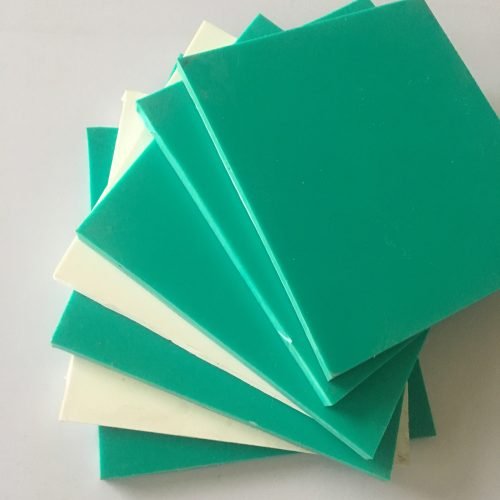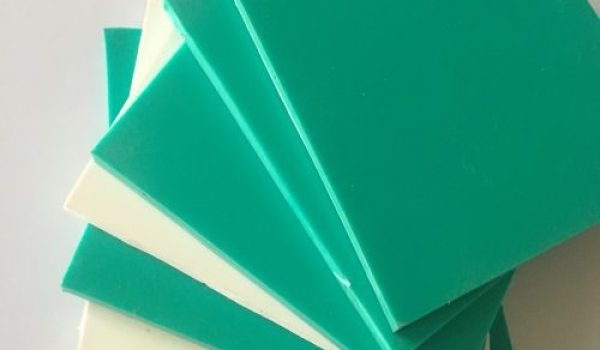PVC injection molding is a complex process. It uses PVC molding techniques to make many products. This method is popular because it’s efficient and cost-effective.
The process involves injecting molten PVC into a mold. It then cools and solidifies, taking the mold’s shape.
PVC is versatile in the injection molding process. It can make everything from pipes and fittings to vinyl records and consumer goods. PVC’s durability and chemical resistance make it perfect for molding.
Knowing PVC’s properties and uses is key to understanding its role in molding. This knowledge helps determine if PVC is right for the job.
PVC injection molding is getting more popular. Many manufacturers choose it for making high-quality products. As demand for PVC grows, learning about PVC molding and the injection process is vital.
In this article, we’ll explore PVC injection molding’s benefits and challenges. We’ll also look at its applications and the injection molding process’s role in manufacturing.
Understanding PVC and Its Properties
Polyvinyl chloride, or PVC, is a versatile plastic material. It’s widely used in construction, packaging, and consumer products. PVC’s PVC properties make it perfect for many uses, like pipes and vinyl records.

PVC can be made in different ways, giving it various PVC properties. It can be rigid for construction or flexible for cables and flooring. This versatility makes PVC very popular.
Some common PVC uses include:
- Pipes and fittings
- Vinyl records
- Credit cards
- Window frames
- Door profiles
Knowing about PVC properties and PVC uses is key for manufacturers. It helps them pick the right PVC for their needs. PVC’s properties, like thermal stability, affect how it’s molded and the quality of the product.
In the next section, we’ll look at the injection molding process. We’ll see how PVC is molded into different products.
| PVC Type | Properties | Uses |
|---|---|---|
| Rigid PVC | High impact resistance, chemical resistance | Construction, pipes and fittings |
| Flexible PVC | High flexibility, resistance to abrasion | Cables, flooring, consumer products |
The Injection Molding Process
The injection molding process is complex and requires careful planning. It uses special techniques to make products with exact dimensions and properties. This method is great for PVC molding, helping create products with high precision.
The process starts with injecting molten plastic into a mold. It then cools and solidifies into the desired shape. This method can make a variety of products, from simple containers to complex parts. Choosing the right materials, equipment, and process parameters is key to success.
What is Injection Molding?
Injection molding is a way to make products by injecting molten plastic into a mold. The mold is made to create a specific product. The machine is set to control the injection, making products with exact dimensions and properties.
Key Steps in Injection Molding
The main steps in injection molding are:
- Material selection: Choosing the right material is essential. For PVC molding, the material must have the needed properties and specifications.
- Mold design: The mold design is critical for precision and accuracy. It must handle the high pressures and temperatures of the process.
- Process optimization: The process must be optimized to meet the desired product specifications. This involves controlling temperature, pressure, and injection speed carefully.
Can PVC Be Injection Molded?
PVC, or polyvinyl chloride, is a versatile material. It can be molded into various shapes and forms. PVC is a popular choice for injection molding because of its low cost and ease of processing.
The PVC molding advantages include its ability to be molded into complex shapes. This makes it ideal for many applications, such as construction, packaging, and healthcare.
The types of PVC suitable for molding include rigid PVC, flexible PVC, and PVC compounds. Rigid PVC is often used for pipes and construction materials. Flexible PVC is used for cables and hoses. PVC compounds are used in packaging materials and medical devices.
Molding PVC has several benefits. It is low-cost and easy to process. PVC can be molded into complex shapes, making it versatile for many applications. It is also durable, suitable for harsh environments and conditions.
| PVC Type | Applications |
|---|---|
| Rigid PVC | Pipes, fittings, construction materials |
| Flexible PVC | Cables, hoses, flexible products |
| PVC Compounds | Packaging materials, medical devices |
In conclusion, PVC can be injection molded. Its advantages make it a popular choice for many applications. The types of PVC suitable for molding include rigid PVC, flexible PVC, and PVC compounds, each with its own benefits and applications.
Challenges of Molding PVC
Molding PVC can be tricky. Material flow and thermal stability are big challenges. When heated, PVC can warp, sink, or delaminate.
Uneven cooling is another issue. It can make the material shrink or deform. To fix this, manufacturers need to adjust temperature and pressure. They also use special mold designs and the right PVC type.
Common Issues Encountered
- Warping: caused by uneven cooling or shrinkage
- Sinking: due to inadequate material flow or pressure
- Delamination: resulting from poor material bonding or contamination
Solutions to Molding Challenges
Manufacturers can solve these problems. Advanced mold designs and cooling systems help with warping and sinking. Choosing the right PVC, like high-impact or flexible, improves flow and stability.
By tackling these issues, manufacturers can make better products. This reduces waste and boosts efficiency in production.
Equipment and Tools for PVC Injection Molding
PVC injection molding needs special equipment and tools for top-notch products. The right PVC molding equipment boosts efficiency and quality. This includes molding machines, molds, and tools like hopper loaders and dryers.
Choosing the right PVC molding tools is key. Look at clamping force, injection capacity, and temperature control. The right tools ensure a smooth molding process and quality products.
Molding Machines for PVC
- Clamping force: The machine’s clamping force must match the PVC type.
- Injection capacity: The machine needs enough capacity for the PVC amount.
- Temperature control: Precise temperature control is vital for molding PVC correctly.
Essential Accessories
Along with molding machines, important accessories are needed for PVC injection molding. These include hopper loaders, dryers, and chillers. They are key for efficient and quality production.
Design Considerations for PVC Products
When designing PVC products, several factors are key. PVC design considerations are vital for the product’s performance and cost. The PVC material thickness is critical for strength, flexibility, and durability.
Design best practices for PVC products include:
- Using CAD software to optimize mold design and minimize material waste
- Selecting the appropriate PVC material type and thickness for the specific application
- Ensuring adequate draft angles to facilitate easy removal from the mold
Understanding PVC design considerations and PVC material thickness is essential. This knowledge helps create high-quality PVC products. By following best practices, manufacturers can make PVC products that are both functional and cost-effective.
| Material Thickness | Product Performance | Cost |
|---|---|---|
| Thin | Low | Low |
| Medium | Medium | Medium |
| Thick | High | High |
Testing and Quality Control
PVC testing and quality control are key to making sure molded PVC products are up to standard. These steps include various tests and checks to confirm the product’s strength, heat resistance, and chemical safety.
By regularly doing PVC testing and quality control, makers can spot any flaws in their products. This lets them fix these issues and make their products better. This way, customers are happier, and the risk of problems with the product goes down.
Some common PVC quality measures include:
- Inspection: looking at products for any defects or oddities
- Testing: checking the product’s strength, heat resistance, and chemical safety
- Certification: getting certifications from trusted third-party groups to show they meet standards
Effective PVC testing and quality control helps make sure products are safe and reliable. This boosts the maker’s reputation and builds trust with their customers.
Here is a summary of the key PVC quality measures in a table format:
| Test Type | Description |
|---|---|
| Mechanical Test | Checks the product’s strength, durability, and how well it works |
| Thermal Test | Looks at how well the product handles heat, cold, and changes in temperature |
| Chemical Test | Sees how the product stands up to chemicals, corrosion, and wear |
Sustainable Practices in PVC Molding
The world is moving towards greener practices, and the PVC molding industry is no different. It’s key to use sustainable PVC practices to cut down waste and lessen environmental harm. Recycling PVC is a big step in reducing landfill waste.
Recycling PVC saves resources and lowers the environmental cost of making new PVC. By recycling, companies can lower their carbon footprint and help the economy go full circle. Some are even looking into eco-friendly PVC substitutes like bioplastics for packaging and more.
Recycling Options for PVC
There are many ways to recycle PVC, with companies starting recycling programs. These programs help turn PVC into new products, saving resources and cutting waste. Here are a couple of common ways to recycle PVC:
- Mechanical recycling: This breaks PVC down into smaller pieces for new products.
- Chemical recycling: This turns PVC into its basic chemicals for making new PVC.
Eco-Friendly Alternatives
Companies are also looking into green alternatives to PVC. Bioplastics, made from things like corn or sugarcane, are biodegradable. They’re good for packaging, consumer items, and even medical stuff.
By using sustainable PVC methods, like recycling and green alternatives, companies can lessen their environmental footprint. As demand for green products grows, we’ll see more new ideas in PVC molding.
| Material | Recycling Option | Eco-Friendly Alternative |
|---|---|---|
| PVC | Mechanical recycling, chemical recycling | Bioplastics |
| Bioplastics | Biodegradable | None |
Conclusion: The Future of PVC Injection Molding
PVC is very versatile and works well for injection molding. The future looks bright with new innovations. These will make PVC even more useful.
Innovations in PVC Molding Techniques
Companies are always improving PVC molding. They want to make it more precise, efficient, and affordable. New mold designs and cooling systems will help create more detailed PVC products.
New PVC formulas and additives will open up more design options. This lets manufacturers make products that fit specific needs.
Final Thoughts on PVC and Its Applications
PVC is used in many industries, like construction and healthcare. It’s popular and has a lot of growth ahead. Despite some environmental concerns, efforts to recycle and find eco-friendly options are underway.
This ensures PVC stays valuable and versatile. The future of PVC injection molding looks very promising for everyone involved.




